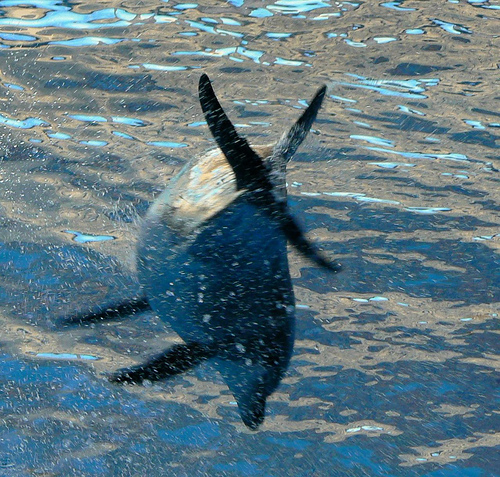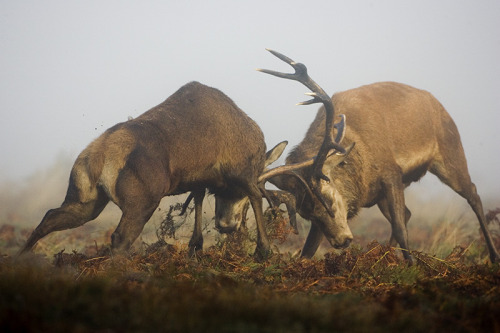
It is typical that when economically devastating events occur that
affect big business and corporations it is front page news and dominates
the 24/7 news cycle for days. However, if something happens that wreaks
havoc on the population there is little notice in corporate-owned media
because repugicans likely deliberately caused the damage. Over the
weekend, another repugican assault on the people passed with hardly a
mention despite well over a million Americans are slated to join 50
million Americans in the ranks of poverty. Of course, throughout all of
2013 repugican austerity decimated the people, so the lack of reporting
on one more assault on the poor is likely business as usual and nothing
to remark about. However, for the 1.3 million long-term unemployed who
lost their benefits, and others approaching the end of their allotted
time for regular benefits, the expiration date is an auspicious moment
certain to cause more distress and despair that informs the causal
effects of repugican economic policy.
On Saturday, 1.3 million Americans lost their unemployment benefits
because Congress failed to extend the benefits before adjourning for the
year. According to Democrats they tried in vain to include an extension
in the bicameral budget deal going into effect next week, but Paul Ryan
would not have it; not when he could lay waste to 1.3 million “
takers.”
Senate Democrats intend on broaching the subject of reinstating the
extensions in two weeks, but Senate repugicans are still able to
filibuster legislation, and House repugicans have said for a month that
extending the benefits is wasteful and counterintuitive while job
numbers improved and GDP rose in the third quarter. It is unlikely the
unemployed will see any relief, particularly because John Boehner said
he will not even consider extending the benefits, and if he did he
demands equal cuts to other domestic programs. One thing repugicans can
be counted on doing is causing economic damage for some segment of the
population for the sake of austerity, sheer pleasure, and to avoid
affecting the rich and corporations.
There were ulterior motives for repugicans to reject extending
unemployment benefits besides sending well over 1.3 million Americans
into poverty. The Council of Economic Advisers
estimated
that not extending the benefits will kill an extra 240,000 jobs in 2014
that is reason enough for repugicans to reject helping the already
unemployed; especially if they can add a quarter-of-a-million Americans
to the ranks of the unemployed. If that is not damage enough, the
non-partisan Congressional Budget Office (CBO) and JP Morgan
projected
that not extending benefits will cut from 0.2 to 0.4 percentage points
off GDP growth that has been a recurring theme and feature of repugican
austerity throughout 2013.
For example, repugicans benefited when they prevailed in the fiscal
cliff deal last December because it took money out of the economy,
slowed GDP growth, and cut the number of jobs that could have been
created. Predictions at the time of the deal estimated it would shave
between 0.4 and 0.6 percent off of GDP growth in 2013 as well as hamper
job creation that could have trimmed the number of Americans requiring
unemployment benefits. The sequester alone
cost
approximately 750,000 jobs that would have been created or retained if
not for the cuts that could have seriously reduced the number of
unemployed that lost benefits on Saturday. The CBO said between the
sequester and other fiscal tightening due to repugican austerity
measures, the cost to the economy was approximately 1 ¼ percentage
points in growth over the course of 2013, and if repugicans had
cancelled sequestration
cuts the economy would have grown faster by about 0.6 of a percentage
point and spared the loss of three-quarters-of-a-million jobs.
It is true third quarter statistics appeared to show improved growth
in the economy, but the growth rate did not reflect true economic
activity and primarily reflected businesses building up their
inventories. The real gross domestic income, an alternative measure for
GDP that measures all incomes of the economy, grew by a
much lower 1.8% and not the 4.1% reported last week. Plus,
according
to the Organization for Economic Co-operation and Development (OECD),
the economy remained about 3.1% below its potential output in 2013, and
about 5 million jobs short of decent employment numbers
according
to the CBO. The loss in potential growth and job shortages are directly
attributable to repugican austerity measures and their deliberate
attempt to sabotage economic recovery with an African American man in
the White House.
repugicans did more damage to the economy and increased the ranks of
the unemployed when food stamp benefits were cut on November 1
by $5 billion
that affected 47-million working, unemployed, elderly, and young
Americans. It is true repugicans rejoiced that millions of Americans
would have less food to eat, but the economic cost was far more than
just taking $5 billion out of the economy and killing
nearly 70,000 jobs. According to Moody’s Analytics, every additional dollar spent on food stamps
generates approximately $1.74 in economic activity that JPMorgan Chase Chief Economist
estimated
cut 0.1% off the annual growth rate of the nation’s GDP in 2013. Of
course repugicans are not as concerned about restricting economic
growth and killing jobs as they are increasing the number of Americans
living in poverty.
Any American that does not believe repugicans are not working to drive more Americans into poverty did not see Paul Ryan’s
poverty advisor tell noted economist Robert Reich
that he did not “
think there’s much reason to be concerned about”
income inequality strangling the economic life out of 98% of the
population and creating poverty. The man advising Ryan, renowned for his
defense of makers versus takers, said the remedy for the widening
income gap sending Americans into poverty is more tax cuts for the rich
and corporations. The idea that Ryan has a poverty advisor who is a
fierce
advocate
of supply side trickle-down economics at the Manhattan Institute is a
sign he is advising repugicans how to retard economic growth, kill
jobs, increase the number of Americans in poverty through tax cuts for
the rich and not investing in creating jobs and growing the economy.
According to the last election and recent
polls,
the overwhelming majority of Americans disagree with repugicans’ and
their Draconian cuts to reduce the deficit instead of increasing taxes
on the richest Americans. All the repugican austerity measures over the
past year have hampered real economic growth, sent more Americans into
poverty, and killed well over a million jobs that increased the number
of unemployed Americans.
The repugicans ended 2013 exactly the way they started it and have
already indicated they are not about to change course in 2014. Without
their sequester, job killing cuts, and economy retarding austerity
economics the 1.3 million unemployed Americans would likely have jobs,
but like their promised $40 billion cuts to food stamps, threats to
extract more cuts in the next debt ceiling crisis, and counsel to get
more tax breaks for the rich, the economy and jobs are going to continue
suffering if for nothing else than to increase the income gap creating a
population living in poverty. Americans can depend on the
corporate-owned media to continue keeping devastating economic news out
of the public consciousness because there is a midterm election on the
horizon. The media is not about to damage repugican’s electoral chances
by telling Americans the reason they are in poverty, not finding good
jobs, and losing their unemployment benefits is because repugicans in
Congress successfully executed their economic agenda.










 (Portrait by Rembrandt Peale)
(Portrait by Rembrandt Peale)


















